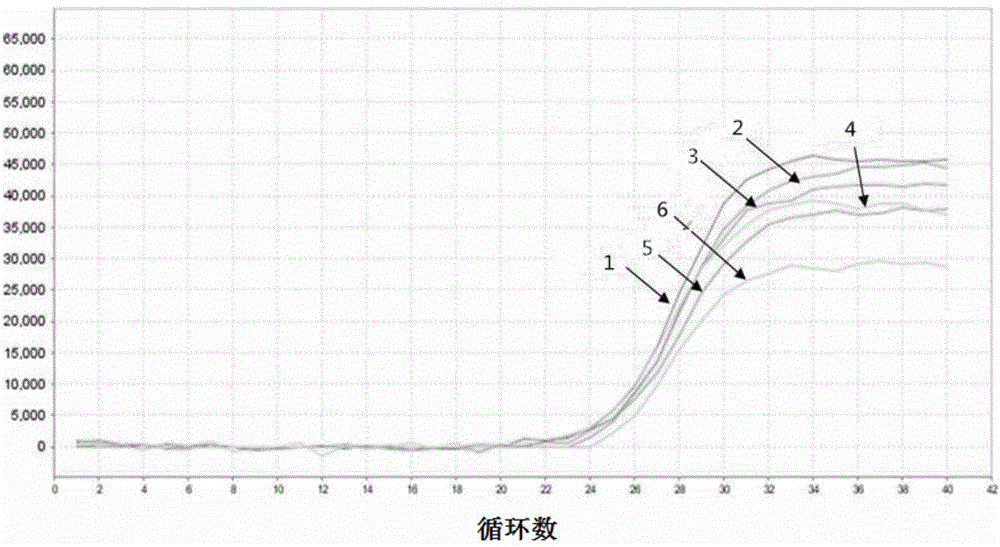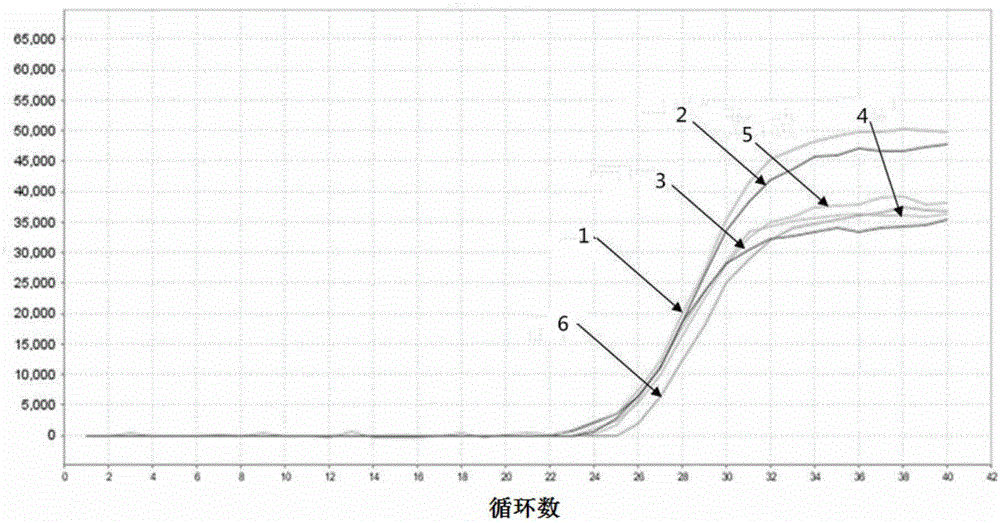Saliva preservation solution, and preparation method and application thereof
A technology for preserving fluid and saliva, which is applied in the field of molecular biology and can solve problems such as cell lysis and unfavorable genetic material stability.
- Summary
- Abstract
- Description
- Claims
- Application Information
AI Technical Summary
Problems solved by technology
Method used
Image
Examples
Embodiment 1a
[0090] In a 1000mL beaker, mix 0.372g of EDTA·2Na, 4g of tartaric acid, 50000U of penicillin, 50g of streptomycin, 100mg of G418, and 5mL of Tris-HCl (pH8.0) with a concentration of 1M. Stirring was stopped until the solid powder was completely dissolved, and then the volume was adjusted to 1 L with a graduated cylinder to obtain saliva preservation solution 1a#.
[0091] Saliva sample collection and storage methods are as follows:
[0092] Healthy volunteers without oral diseases took oral mucosal swabs, rinsed their mouths with mouthwash several times, and wiped the inside of the oral cavity for 20 times, took out the swabs, folded off the cotton wool, and placed them in 2ml of 500ul saliva preservation solution. Place in a spiral tube at room temperature. Saliva sample DNA extraction method:
[0093] Add 5wt% Chelex 100 to the 50ul supernatant taken out each time in a 1.5ml centrifuge tube, shake and mix thoroughly, add 10μl human proteinase K (20mg / m1), and vortex mix. ...
Embodiment 1b-1c
[0114] Examples 1b-1c and Example 1a used the same preparation method to prepare saliva preservation solutions 1b#-1c#, except that the content of each component was different, as shown in Table 2.
[0115] Table 2
[0116] Reagent name Embodiment 1a (1a#) Embodiment 1b (1b#) Embodiment 1c (1c#) EDTA·2Na 0.372g (1mM) 3.72g (10mM) 1.86g (5mM) 1M Tris-HCl (pH8.0) 5mL (5mM) 20mL (20mM) 10mL (10mM) penicillin 50000U (50U / mL) 200000U (200U / mL) 100000U (100U / mL) streptomycin 50g (86.00mM) 200g (343.9mM) 151.79g (170mM) G418 100mg (0.144mM) 400mg (0.577mM) 200mg (0.28mM) tartaric acid 4g (26.65mM) 10g (66.63mM) 5g (33.32mM)
[0117] This example studies the use of saliva preservation fluid 1b# and 1c# to preserve saliva swabs, after preservation for 60 days, 120 days, 180 days, 240 days and 300 days, the microorganisms such as exogenous bacteria in saliva preservation fluid and saliva swabs pollution...
Embodiment 1d-1i
[0124] Examples 1d-1i and Example 1a used the same preparation method to prepare saliva preservation solution 1d#-1i#, the difference lies in the composition of the components, as shown in Table 4.
[0125] Table 4
[0126]
[0127]
[0128] This example studies the contamination of microorganisms such as exogenous bacteria.
[0129] Sampling: Shake and mix the spiral tube containing the oral swab and preservation solution, take 10ul and dilute it in a 10-fold gradient, dilute 10 3 times. Sampling and dilution were performed at different time points.
[0130] Counting: Each diluted sample after mixing is dropped on a counting plate and counted under a microscope. The comparison of the number of microorganisms in the preservation solution at each time point is shown in Table 5:
[0131] table 5
[0132] 1a# 1d# 1e# 1f# 1g# 1h# 1i# 0 days 8438 8440 8434 8386 8397 8408 8457 60 days 8597 8588 8579 8901 8907 8804 8847 120 day...
PUM
 Login to View More
Login to View More Abstract
Description
Claims
Application Information
 Login to View More
Login to View More - R&D
- Intellectual Property
- Life Sciences
- Materials
- Tech Scout
- Unparalleled Data Quality
- Higher Quality Content
- 60% Fewer Hallucinations
Browse by: Latest US Patents, China's latest patents, Technical Efficacy Thesaurus, Application Domain, Technology Topic, Popular Technical Reports.
© 2025 PatSnap. All rights reserved.Legal|Privacy policy|Modern Slavery Act Transparency Statement|Sitemap|About US| Contact US: help@patsnap.com



